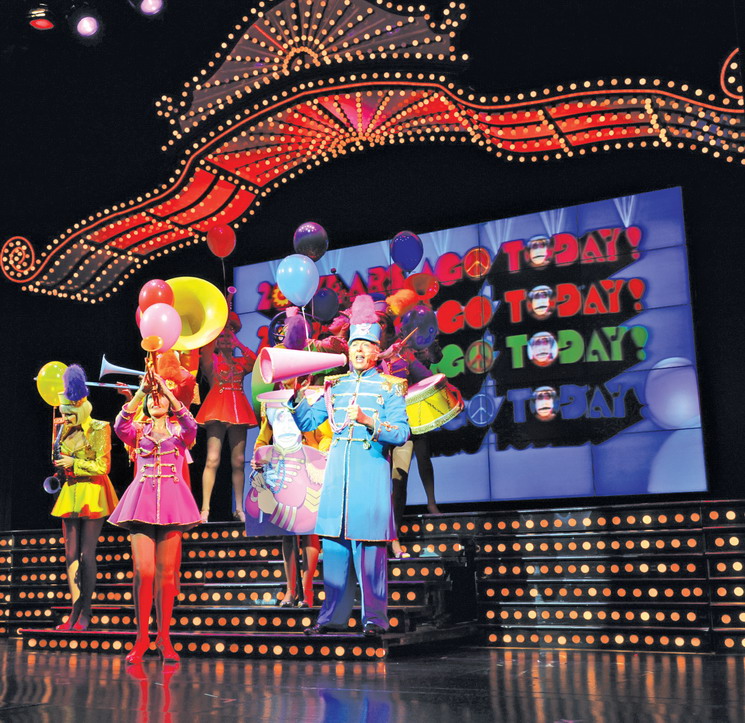For 20 years, the Palm Springs (CA) Follies have reprised vaudeville, burlesque and other variety shows, with veteran Tinseltown, Broadway or Las Vegas performers as headliners.
For their prior production seasons, which run from November to May in a converted moviehouse, the Follies used fabric backdrops that it would remove between sets, as well as a movie screen to display static projections.
Riff Markowitz, the show’s producer and host, inspired by Las Vegas stage shows, decided to update his ensemble’s production capabilities by incorporating a bank of LCD screens to develop its stage set for its last production cycles. He contacted NEC Display Solutions, which contacted Fluid Sound (San Diego), an AV integration company.
Dennis Pappenfus, one of Fluid Sound’s managing partners, said an LED display’s price point was prohibitive for the Follies’ budget, so LCDs were the logical choice. The screen, which measures approximately 160 sq. ft., deviated from Fluid Sound’s normal repertoire of retail, hotel or restaurant video displays.
“The environment wasn’t well suited to all the backdrop changes they had to do, so it was exciting to see how the 25-screen display broadened their capabilities,” Pappenfus said.
Because the displays had to be constructed to very tight tolerances, Fluid Sound said making the display align plumb to the wall required developing a custom framing system that provided a mounting surface. Because Markowitz wanted the display to run as brilliantly and crisply as possible, most productions feature maximum brightness and 1080i resolution.
Advertisement
Bob Feudi, the Follies’ technical director, said the new display has helped set the tone for its performances. “It’s nice to be able to change the mood in the middle of a performance without having to clandestinely remove static sets,” he said. “I’d say our content divides evenly between static and motion, so it provides good versatility.”
To create most of the sets’ content, Feudi’s team develops original designs using Adobe Creative Suite, although public-domain photos and film reels have helped create context for certain period pieces. He noted the easy transition of loading the content onto its Barco Axon media server, which it was previously using to manage lighting and special effects, to manipulate hue, color saturation and video downloads.
Feudi conceded another reason why the screens routinely run at maximum brightness: “The average age of our patrons is 58, with those into their 80s and 90s being fairly common. With all of the moving lights and background illumination, we want to make sure the imagery is readily visible.”


 Tip Sheet2 days ago
Tip Sheet2 days ago
 Business Management1 week ago
Business Management1 week ago
 Women in Signs1 week ago
Women in Signs1 week ago
 Real Deal3 days ago
Real Deal3 days ago
 Editor's Note7 days ago
Editor's Note7 days ago
 Maggie Harlow2 weeks ago
Maggie Harlow2 weeks ago
 Line Time1 week ago
Line Time1 week ago
 Product Buying + Technology1 week ago
Product Buying + Technology1 week ago

















